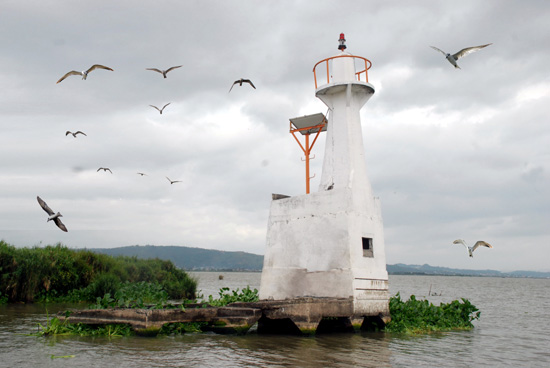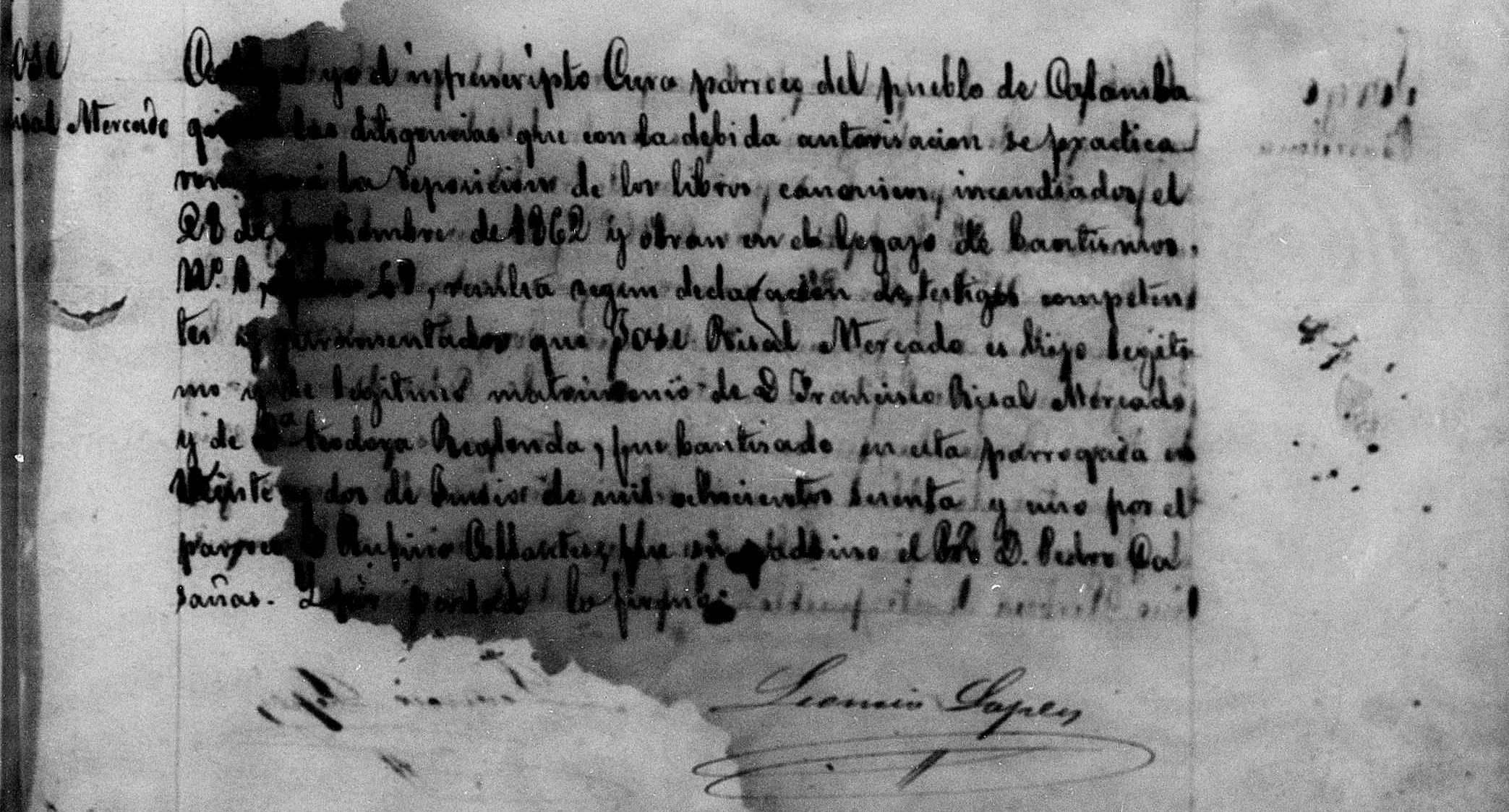|
Napindan Lighthouse
The Napindan Lighthouse (Filipino: ''Parola ng Napindan'') was a lighthouse in Taguig, Rizal (present day Metro Manila). It served as a meeting point for the Katipunan, a revolutionary group that led the Philippine Independence movement. It was destroyed during the Philippine–American War. Background The Napindan Lighthouse (''Parola ng Napindan'') is a named used by historians to refer to a former lighthouse situated at the mouth of Napindan Channel, a vantage point of the Pasig River and Laguna de Bay. The site of the former lighthouse is in present-day Barangay Napindan in Taguig. There is no known extant photograph of the lighthouse. Philippine Revolution According to local historians of both the cities of Taguig and Pasig, the lighthouse was the first site where Katipunan leaders Andres Bonifacio and Emilio Aguinaldo met with fellow revolutionaries on the night of May 29, 1896 to launch an armed revolution against the Spanish colonial administration over the Phil ... [...More Info...] [...Related Items...] OR: [Wikipedia] [Google] [Baidu] |
Taguig
Taguig (), officially the City of Taguig ( fil, Lungsod ng Taguig), is a 1st class highly urbanized city in Metro Manila, Philippines. According to the 2020 census, it has a population of 886,722 people. Located in the northwestern shores of Laguna de Bay, the city is known for Bonifacio Global City, one of the leading financial centers of the Philippines. Originally a fishing village during the Spanish and American colonial periods, it experienced rapid growth when former military reservations were converted by the Bases Conversion and Development Authority (BCDA) into mixed-use planned communities. Taguig became a highly urbanized city with the passage of Republic Act No. 8487 in 2004. The city is politically subdivided into 28 barangays: Bagumbayan, Bambang, Calzada, Central Bicutan, Central Signal Village, Fort Bonifacio, Hagonoy, Ibayo Tipas, Katuparan, Ligid Tipas, Lower Bicutan, Maharlika Village, Napindan, New Lower Bicutan, North Daang Hari, North Signal Villag ... [...More Info...] [...Related Items...] OR: [Wikipedia] [Google] [Baidu] |
Emilio Aguinaldo
Emilio Aguinaldo y Famy (: March 22, 1869February 6, 1964) was a Filipino revolutionary, statesman, and military leader who is the youngest president of the Philippines (1899–1901) and is recognized as the first president of the Philippines and of an Asian constitutional republic. He led Philippine forces first against Spain in the Philippine Revolution (1896–1898), then in the Spanish–American War (1898), and finally against the United States during the Philippine–American War (1899–1901). Aguinaldo remains a controversial figure in Filipino history. Though he has been recommended as a national hero of the Philippines, many have criticized him for the deaths of the revolutionary leader Andrés Bonifacio and general Antonio Luna, as well as his collaboration with the Japanese Empire during their occupation of the Philippines in World War II. "Aguinaldo's collaboration with Japan began with his contact with Gen. Masami Maeda, Homma's chief of staff. ..Agui ... [...More Info...] [...Related Items...] OR: [Wikipedia] [Google] [Baidu] |
Lighthouses In The Philippines
With the Philippine Archipelago comprising over 7,100 islands packed in an area of , the country has the fifth-longest coastline in the world. The Philippine coast has a total length of and is very irregular, with numerous bays, gulfs, and islets. Eleven of the largest islands of the archipelago are the major islands and main centers of population, with ten of its most populous cities located along the coast. Approximately 1,000 of the smaller islands are also populated. With more than of coasting routes and tortuous channels regularly navigated by vessels trading among some 300 separate ports, navigation aids like lighthouses help mariners against misnavigation and guide them to safety and out of danger from grounding on its treacherous reef and shoals. Large international ships rely on lighthouses to guide them safely out from the open sea and into Philippine waters. Once within Philippine waters, lighthouses help them maneuver through its narrow straits and channels ... [...More Info...] [...Related Items...] OR: [Wikipedia] [Google] [Baidu] |
Philippine Coast Guard
The Philippine Coast Guard (PCG) ( fil, Tanod Baybayin ng Pilipinas) is recognized as the third armed uniformed service of the country attached to the Philippines' Department of Transportation, tasked primarily with enforcing laws within Philippine waters, conducting maritime security operations, safeguarding life and property at sea, and protecting marine environment and resources; similar to coast guard units around the world. In case of a declaration of war, the Coast Guard shall also serve as an attached service of the Department of National Defense. It currently maintains a presence throughout the archipelago, with thirteen Coast Guard Districts, fifty-four CG Stations and over one hundred ninety Coast Guard Sub-Stations, from Basco, Batanes to Bongao, Tawi-Tawi. History Colonial era history The Philippine Coast Guard is the oldest and only humanitarian armed service in the Philippines. Its beginnings could be traced back to the early 20th century when coast guardin ... [...More Info...] [...Related Items...] OR: [Wikipedia] [Google] [Baidu] |
Typhoon
A typhoon is a mature tropical cyclone that develops between 180° and 100°E in the Northern Hemisphere. This region is referred to as the Northwestern Pacific Basin, and is the most active tropical cyclone basin on Earth, accounting for almost one-third of the world's annual tropical cyclones. For organizational purposes, the northern Pacific Ocean is divided into three regions: the eastern (North America to 140°W), central (140°W to 180°), and western (180° to 100°E). The Regional Specialized Meteorological Center (RSMC) for tropical cyclone forecasts is in Japan, with other tropical cyclone warning centers for the northwest Pacific in Hawaii (the Joint Typhoon Warning Center), the Philippines, and Hong Kong. Although the RSMC names each system, the main name list itself is coordinated among 18 countries that have territories threatened by typhoons each year. Within most of the northwestern Pacific, there are no official typhoon seasons as tropical cyclones form th ... [...More Info...] [...Related Items...] OR: [Wikipedia] [Google] [Baidu] |
Antonio Luna
Antonio Narciso Luna de San Pedro y Novicio Ancheta (; October 29, 1866 – June 5, 1899) was a Filipino army general who fought in the Philippine–American War before his assassination in 1899. Regarded as one of the fiercest generals of his time, he succeeded Artemio Ricarte as the Commanding General of the Philippine Army. He sought to apply his background in military science to the fledgling army. A sharpshooter himself, he organized professional guerrilla soldiers later named the " Luna Sharpshooters" and the "Black Guard" with Senyor Michael Joaquin. His three-tier defense, now known as the Luna Defense Line, gave the American troops a difficult endeavor during their campaign in the provinces north of Manila. This defense line culminated in the creation of a military stronghold in the Cordillera. Despite his commitment to discipline the army and serve the Republic which attracted the admiration of people, his temper and fiery outlashes caused some to abhor him, includin ... [...More Info...] [...Related Items...] OR: [Wikipedia] [Google] [Baidu] |
José Rizal
José Protasio Rizal Mercado y Alonso Realonda (, ; June 19, 1861 – December 30, 1896) was a Filipino nationalist, writer and polymath active at the end of the Spanish colonial period of the Philippines. He is considered the national hero (''pambansang bayani'') of the Philippines. An ophthalmologist by profession, Rizal became a writer and a key member of the Filipino Propaganda Movement, which advocated political reforms for the colony under Spain. He was executed by the Spanish colonial government for the crime of rebellion after the Philippine Revolution broke out; it was inspired by his writings. Though he was not actively involved in its planning or conduct, he ultimately approved of its goals which eventually resulted in Philippine independence. Rizal is widely considered one of the greatest heroes of the Philippines and has been recommended to be so honored by an officially empaneled National Heroes Committee. However, no law, executive order or proclamati ... [...More Info...] [...Related Items...] OR: [Wikipedia] [Google] [Baidu] |
Pio Valenzuela or П. O., Greek-Australian poet born 1951
{{Disambiguation, geo ...
Pio may refer to: Places * Pio Lake, Italy * Pio Island, Solomon Islands * Pio Point, Bird Island, south Atlantic Ocean People * Pio (given name) * Pio (surname) * Pio (footballer, born 1986), Brazilian footballer * Pio (footballer, born 1988), Brazilian footballer PIO * Programmed input–output, a method of computer data transmission * Public information officer of a government department * Person of Indian Origin not living in India * Pilot-induced oscillation, an undesirable phenomenon in aircraft control Other uses * Pio, prefix of 250 octets, a unit of information in computer science See also * Pi O П. O. (or Pi O, born 1951) is a Greek- Australian, working class, anarchist poet. Born in Katerini, Greece, П. O. came to Australia with his family around 1954. After time in Bonegilla Migrant Reception and Training Centre, the family moved to ... [...More Info...] [...Related Items...] OR: [Wikipedia] [Google] [Baidu] |
Cry Of Pugad Lawin
The Cry of Pugad Lawin ( tgl, Sigaw ng Pugad Lawin, es, Grito de Pugad Lawin) was the beginning of the Philippine Revolution against the Spanish Empire. In late August 1896, members of the '' Katipunan'' led by Andrés Bonifacio revolted somewhere around Caloocan, which included parts of the present-day Quezon City. Originally the term ''cry'' referred to the first clash between the Katipuneros and the Civil Guards (''Guardia Civil''). The cry could also refer to the tearing up of community tax certificates (''cédulas personales'') in defiance of their allegiance to Spain. The inscriptions of "''Viva la Independencia Filipina''" can also be referred as term for the cry. This was literally accompanied by patriotic shouts. Because accounts of the event vary, the exact date and place of the event is unknown.. From 1908 until 1963, the event was thought to have occurred on August 26 in Balintawak. In 1963, the Philippine government declared August 23 to be the date of ... [...More Info...] [...Related Items...] OR: [Wikipedia] [Google] [Baidu] |
Spanish Colonization In The Philippines
Spanish might refer to: * Items from or related to Spain: ** Spaniards are a nation and ethnic group indigenous to Spain **Spanish language, spoken in Spain and many Latin American countries **Spanish cuisine Other places * Spanish, Ontario, Canada * Spanish River (other), the name of several rivers * Spanish Town, Jamaica Other uses * John J. Spanish (1922–2019), American politician * "Spanish" (song), a single by Craig David, 2003 See also * * * Español (other) * Spain (other) * España (other) * Espanola (other) * Hispania, the Roman and Greek name for the Iberian Peninsula * Hispanic, the people, nations, and cultures that have a historical link to Spain * Hispanic (other) * Hispanism * Spain (other) * National and regional identity in Spain * Culture of Spain * Spanish Fort (other) Spanish Fort or Old Spanish Fort may refer to: United States * Spanish Fort, Alabama, a city * Spanish Fort (C ... [...More Info...] [...Related Items...] OR: [Wikipedia] [Google] [Baidu] |



